


NASA's Voyager 2 spacecraft gave humanity its first glimpse of Neptune and its moon Triton
in the summer of 1989. This picture of Neptune was produced from the last whole planet images
taken through the green and orange filters on the Voyager 2 narrow angle camera. The images were taken on Aug. 20, 1989,
at a range of 4.4 million miles from the planet, 4 days and 20 hours before closest approach on Aug. 25. The picture shows
the Great Dark Spot and its companion bright smudge; on the west limb the fast moving bright feature called "Scooter"
and the little dark spot are visible. These clouds were seen to persist for as long as Voyager's cameras could resolve them.
North of these, a bright cloud band similar to the south polar streak may be seen. In the summer of 2015, another NASA mission
to the farthest zone of the solar system, New Horizons, will make a historic first close-up study of Pluto. Although a fast flyby,
New Horizons' Pluto encounter on July 14, 2015, will not be a replay of Voyager but more of a sequel and a reboot, with a new and more
technologically advanced spacecraft and, more importantly, a new cast of characters.
Those characters are Pluto and its family of five known moons, all of which will be seen up close for the first time next summer(2015)
Image Credit: NASA
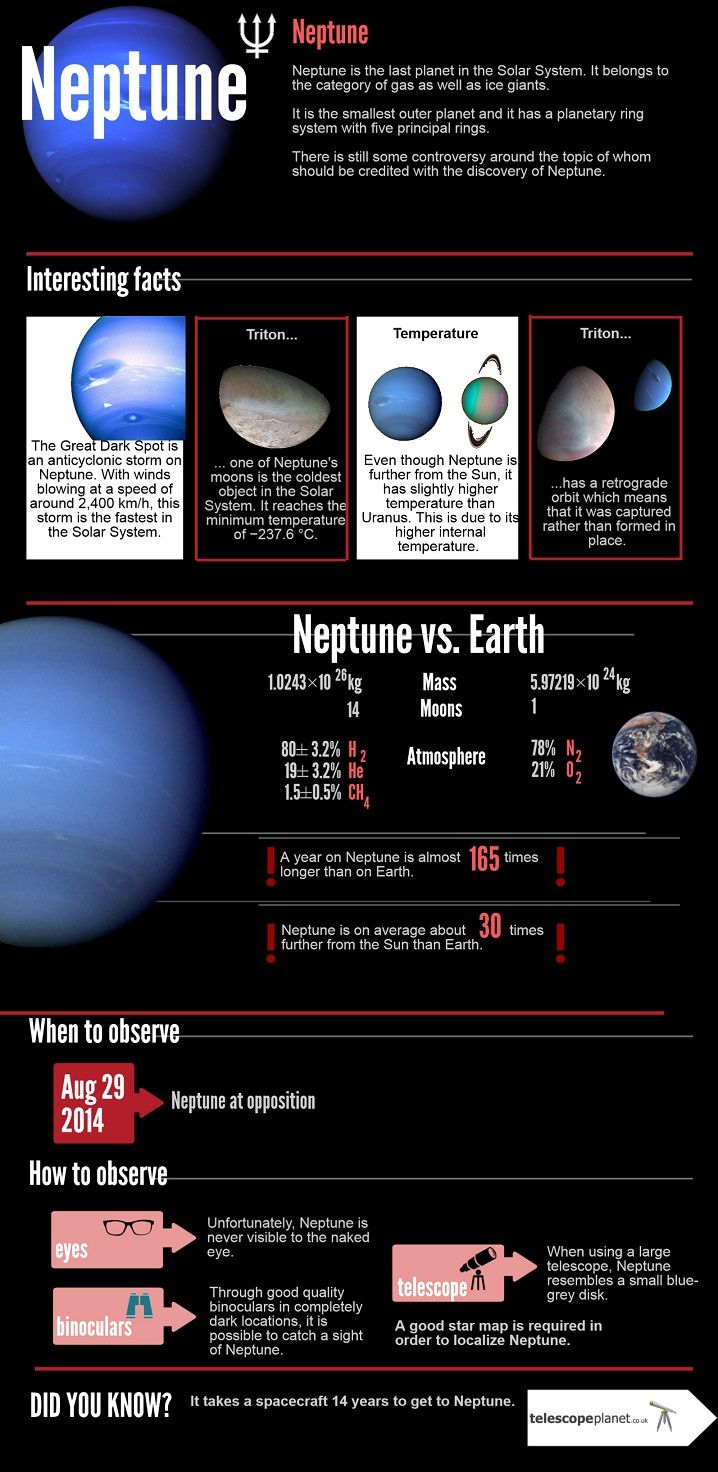
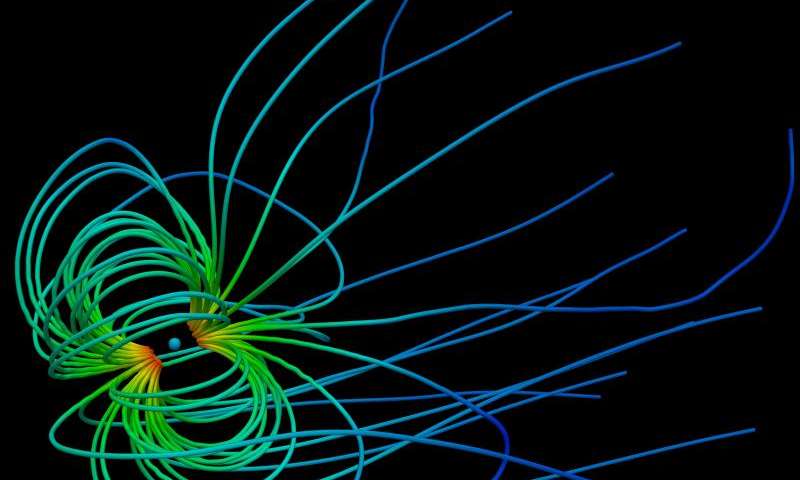
A snapshot of Neptune’s magnetic field from the movie. Credit: Lars Mejnertsen, Imperial College London
Although new missions to Neptune have been proposed, none are likely to arrive for many decades.
So for now, the only way to better understand how the planet works is through computer simulations.
In a new example of interdisciplinary research at Imperial College London, the space and atmospheric
physics group and the plasma physics group have been working together to address this challenge.
Read more at: http://phys.org/news/2015-07-neptune-badly-magnetic-field.html#jCp
Talk about recycling! Twenty-five years after Voyager 2 zinged past Neptune�s moon Triton,
scientists have put together a new map of the icy moon�s surface using the old data.
The information has special relevance right now because the New Horizons spacecraft is approaching Pluto fast,
getting to the dwarf planet in less than a year. And it�s quite possible that Pluto and Triton will look similar.
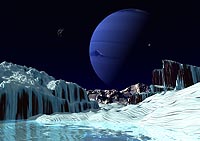
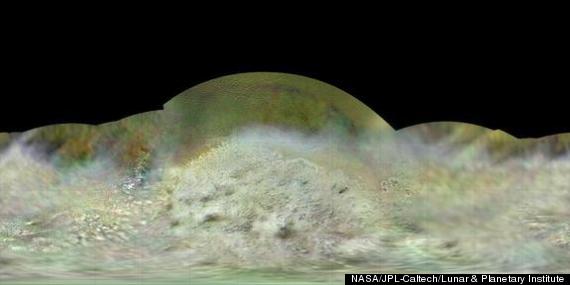
Paul Schenk of the Lunar and Planetary Institute used data from NASA's Voyager 2 spacecraft,
which flew by Neptune and its big moon Triton on Aug. 25, 1989, to create this best-ever global color map of the moon.
"In the intervening quarter century and its many discoveries, I think we have tended to forget how strange and exotic Triton really is!"
Schenk wrote in a blog post Thursday (Aug. 21, 2014).
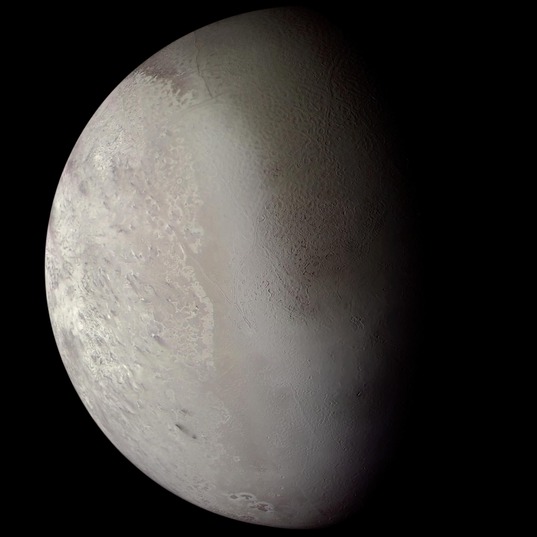
NASA / JPL / Ted Stryk Triton color global view Voyager 2 acquired the images for this high-resolution mosaic of Triton on August 25, 1989.
The south pole is at the left; several of Triton's famous south polar geysers are visible.
Toward the equator at right, Triton is covered with a strange "cantaloupe terrain".
Published on Aug 21, 2014 The Voyager 2 spacecraft flew by Triton, a moon of Neptune, on August 25, 1989. Paul Schenk,
a scientist at the Lunar and Planetary Institute in Houston, used Voyager data to construct this video recreating that exciting encounter.